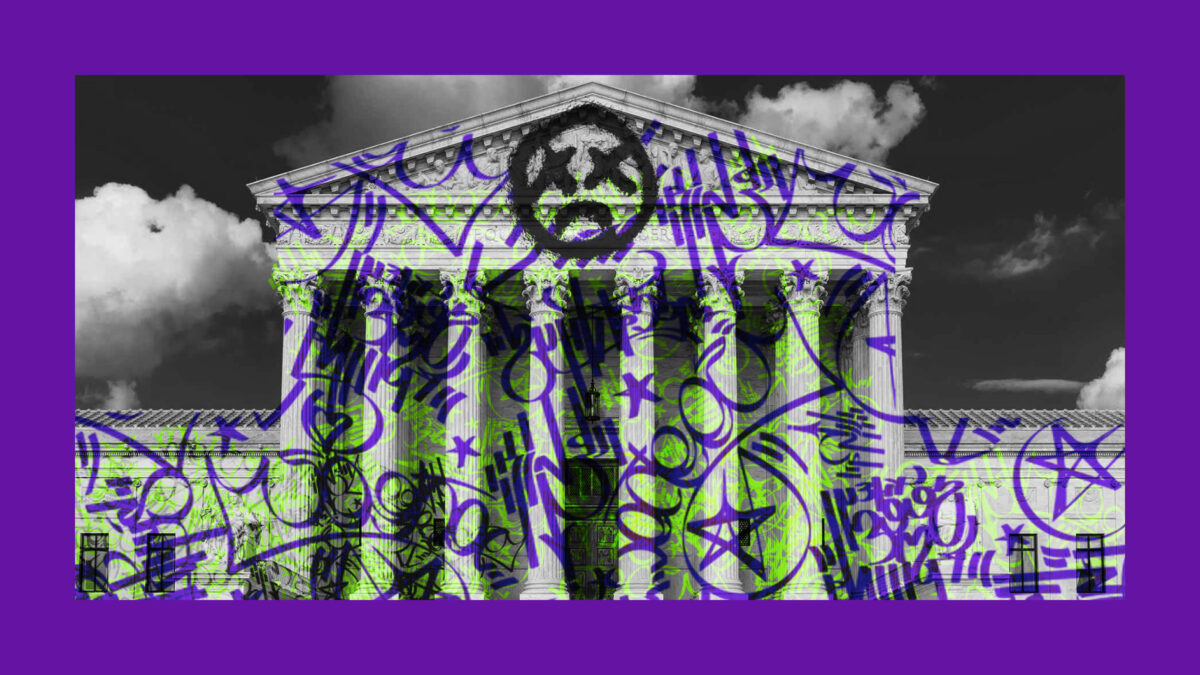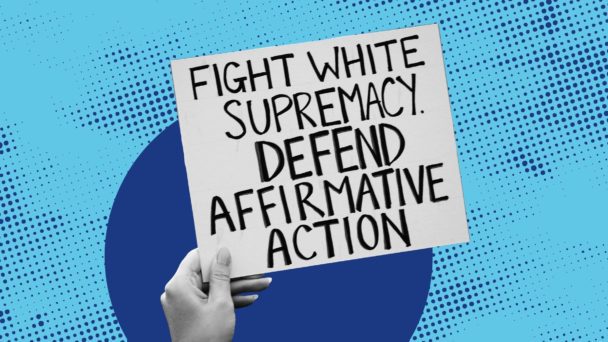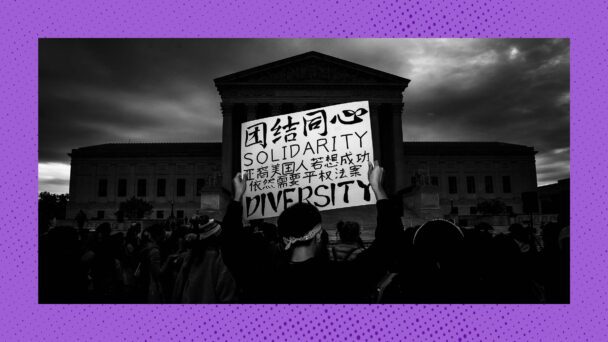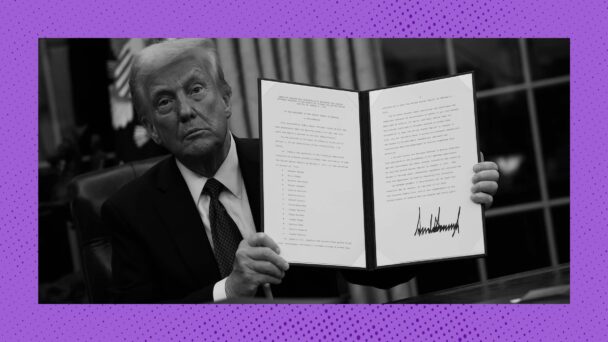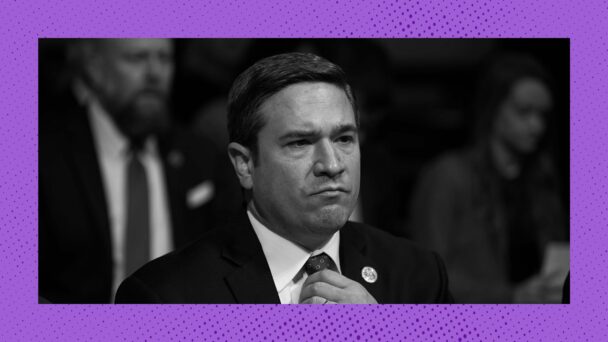How come straight people don’t get a parade? Is it discrimination when my boss puts pronouns in his email signature Why won’t my kids talk to me anymore?
While our nation’s brightest jurists have spent the last several months wrestling with just how emphatically they should greenlight Trump’s autocratic takeover, they’ve also found time to consider some of these important questions, culminating in its decision in Ames v. Ohio Department of Youth Services. Ames is the latest byproduct of the conservative legal movement’s weaponization of philosophical legal principles to get to the political outcomes it desires. Measures that originally intended to combat subordination of minorities are legal cudgels used to maintain and strengthen social hierarchies—all under the guise of a commitment to equality that even some liberals are taking at face value.
Marlean Ames, a straight woman, worked for the Ohio Department of Youth Services for a decade as an executive secretary. In 2014, she was promoted to the position of program administrator, where she received solid performance reviews from her gay supervisor. Then, in 2019, Ames applied for a promotion to bureau chief. She didn’t get it, and the position would later be filled by a gay woman. Shortly thereafter, two heterosexual higher-ups, both of whom were involved in the decision to deny her the promotion, demoted Ames back to executive secretary, resulting in a pay cut. The program administrator role was later filled by a gay man.
Ames sued under Title VII of the Civil Rights Act, which prohibits employment discrimination on the basis of race, color, national origin, religion, and sex—including sexual orientation, gender identity, and pregnancy status. Traditionally, these kinds of Title VII claims are analyzed under a three-step “burden-shifting” test that was established by the Supreme Court in its 1973 decision in McDonnell Douglas Corporation v. Green decision. Since then, the test has become an important tool for plaintiffs who suspect that their Title VII rights have been violated. Most employers aren’t dumb enough to openly say they’re firing someone for their race, gender, or other protected trait. The McDonnell Douglas framework provides workers with an accessible pathway to obtain discovery to determine whether the decision was, in fact, discriminatory.
The first step of this test usually requires the employee to provide evidence to support an inference that their employer intended to illegally discriminate against. In other words, the employee simply needs to point to something that suggests the decision was made because of their race, gender or another protected trait—in practice, a pretty light burden.
But according to the lower court, Ames couldn’t pass this test. That’s because some circuit courts—including the Sixth Circuit, where Ames appealed—have included an extra requirement for workers who allege “reverse” discrimination, requiring majority-group employees to show that their boss is the “unusual” employer who discriminates not against minorities, but against members of the majority. The Sixth Circuit reasoned that Ames could meet this requirement by showing that decisionmakers who denied Ames a promotion and demoted her were gay, or by offering statistical evidence of a broader pattern of anti-straight discrimination at the Department. Because Ames was unable to provide such evidence, her case failed.
This additional requirement for majority-group employees is known as the “background circumstances” test, and it reflects the reality that the typical victims of workplace discrimination are members of minority groups. This is the whole reason Congress passed the Civil Rights Act in the first place six decades ago.
That reality is not of much concern to the Supreme Court, which unanimously struck down the “background circumstances” test in Ames as inconsistent with Title VII. This means that, going forward, the same standard will be used for gay plaintiffs experiencing homophobic discrimination, and straight plaintiffs who get written up after complaining about one too many HR-sponsored pride-themed pizza parties.
The decision comes, of course, at a moment when the very notion of “diversity” is under attack. Both Ames and the Trump administration’s relentless efforts to terminate diversity initiatives are components of a decades-long conservative effort to re-entrench social hierarchies. In the legal arena, that ideological war has, in part, taken shape through a gradual restructuring and dismantling of Civil Rights Movement-era legal protections. Over the past few years, their efforts have culminated with Supreme Court decisions striking down affirmative action in higher education, gutting voting rights protections, and opening the door to legal challenges to both gay and interracial marriage. The Ames decision is their latest victory.
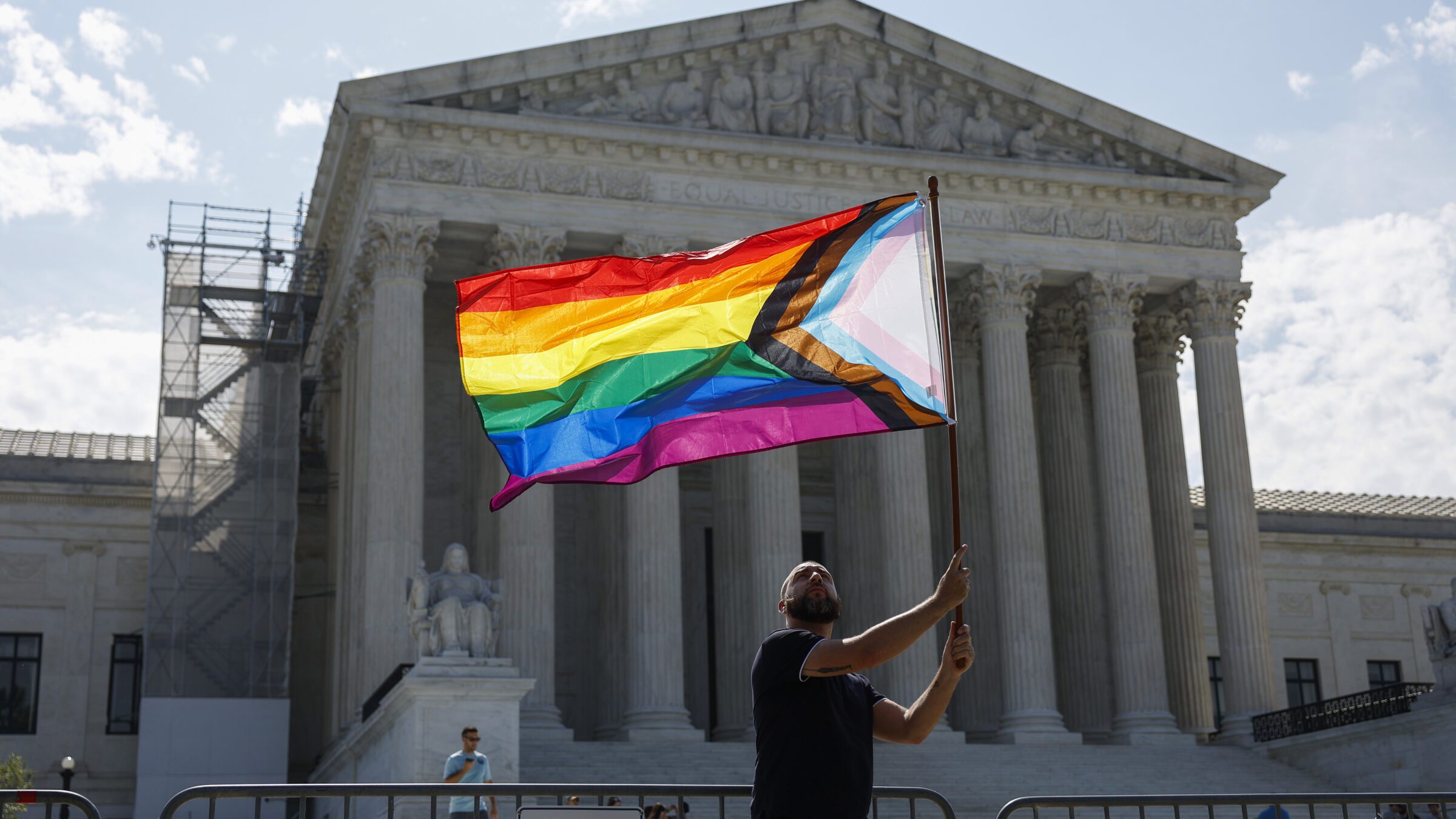
(Photo by Anna Moneymaker/Getty Images)
There’s long been heady debates among legal scholars about whether anti-discrimination laws should be understood through an “anti-classification” lens or an “anti-subordination” one. As the names suggest, the former view holds that any classifications based on characteristics such as race or sex are inherently suspect, regardless of intent or motive. The latter only views classifications made for purposes of subordinating minority groups as problematic.
The Fourteenth Amendment, which Congress ratified after the Civil War, was passed to prevent the subordination of racial minorities—“a radical remedy[] to bring millions of former slaves into the body politic[],” as the historian Martha Jones writes. But white backlash was swift, and the promise of the Fourteenth Amendment remained unfulfilled into the 20th century. The durability of this racial caste system necessitated the birth of the Civil Rights Movement in the 1950s, which led to Brown v. Board of Education, the Voting Rights Act of 1965, and the Civil Rights Act at issue in Marlean Ames’s case.
And yet over time, white supremacists obscured the original purpose of these laws, insisting that the real racism was any consideration of race at all—even when the consideration aimed not to perpetuate harm against long-marginalized communities, but to repair it. Because open racism was no longer in vogue, conservative activists, lawyers, and judges began co-opting the aspirational calls of anti-racists for a “color-blind” society. They argued that the Constitution barred government efforts to combat segregation because such measures made classifications based on race, and wasn’t that kind of racist in and of itself?
In the 1970s, the Supreme Court began embracing the anti-classification principle, particularly in its affirmative action cases. In 1978, for example, the Court began questioning the constitutionality of affirmative action policies under the guise of a commitment to racial equality in Regents of the University of California v. Bakke. Justice Lewis Powell’s controlling opinion in Bakke struck down the use of racial quotas in college and noted that racial and ethnic classifications of any sort should be inherently suspect. It didn’t matter to Powell that some groups, as he put it, are “perceived as victims of societal discrimination”—the law should treat all racial classifications the same. In 2023, when the Court struck down affirmative action altogether in Students For Fair Admissions v. Harvard, the anti-classification jurisprudence that conservatives had been building for five decades finally won out.
The Court has also embraced the anti-classification view into other areas of anti-discrimination law. In the Title VII context, it was once upon a time widely accepted that employers who considered the disparate impact of a policy or practice—for example, how a facially neutral rule might end up harming one racial group more than others—were acting in line with the goals of the Civil Rights Act. But in 2009, the Court held for the first time in Ricci v. DeStefano that if an employer tries to avoid implementing a policy that could have a negative impact on Black workers, that very effort could be used as evidence that the employer actually intends to discriminate against non-Black workers. Again, in the Court’s hands, the Civil Rights Act became a weapon that activists could use to thwart the goals of the lawmakers who passed it.
At this point in the ideological struggle to interpret civil rights law, when conservatives have already moved the needle so far to the right, some liberals might be persuaded that the anti-classification view makes good theoretical sense, or that it’s a “fair” approach. But this loses sight of the fact that conservatives care neither about fairness nor the theoretical justifications for civil rights protections. The anti-classification argument is, to them, nothing more than a vehicle for chipping away at the potential of civil rights laws to deliver on what they were intended to achieve.
Ames, after all, is a unanimous decision authored by a liberal justice, Ketanji Brown Jackson. After she walks through the McDonnell Douglas framework, she signals her support for the anti-classification view by highlighting the statute’s focus on individuals, rather than groups. According to Jackson, “[b]y establishing the same protections for every “individual”—without regard to that individual’s membership in a minority or majority group—Congress left no room for courts to impose special requirements on majority-group plaintiffs alone.” Thus, she concludes, the “background circumstances” test doesn’t pass legal muster.
Now, compare that with Justice Clarence Thomas’s concurrence, which Justice Neil Gorsuch joined. Thomas agrees with Jackson that the “background circumstances” test should be struck down, but also uses the occasion to decry “atextual legal rules and frameworks” and “[j]udge-made doctrines that have a tendency to distort the underlying statutory text.” The entire McDonnell Douglas framework, which has been a key tool for plaintiffs in employment discrimination cases for the past half-century, is, according to Thomas, an illegitimate judge-made doctrine that the Court must scrap altogether. While Jackson’s opinion could be understood as a compromise to preserve McDonnell Douglas, Thomas’ opinion is a call for litigants to give him a chance to destroy it.
Ames isn’t just a case about employment discrimination, or some vague notion of fairness. It’s another step in the reactionary project of transforming civil rights protections into weapons of the conservative legal movement. The only question at this point is whether liberals will wake up before there’s nothing left to defend.
A version of this essay was originally published in Fireside Stacks, a Roosevelt Forward newsletter about progressive politics, policy, and economics.
Due to an editing error, an earlier-published version of this essay omitted a paragraph of analysis. It has since been corrected.
